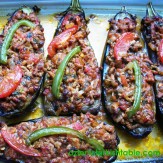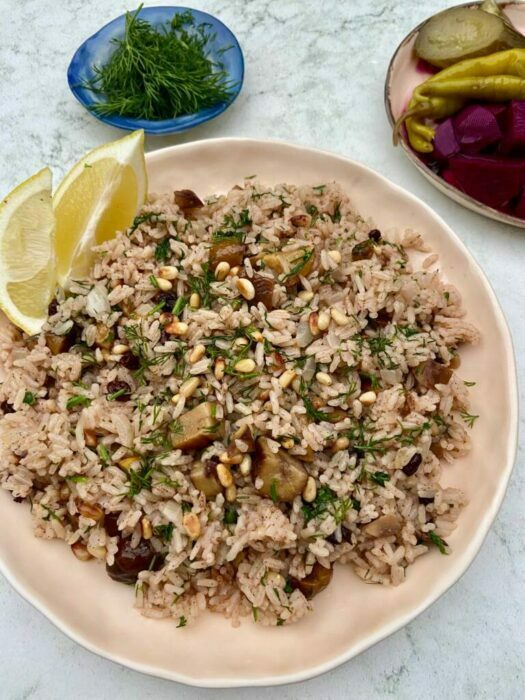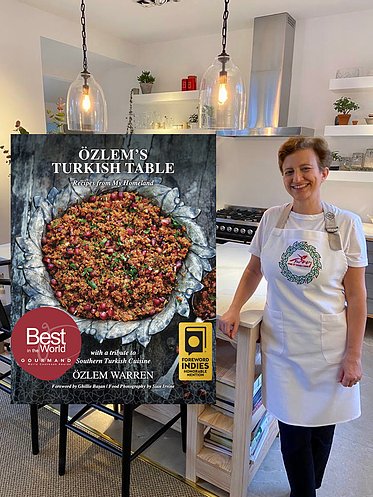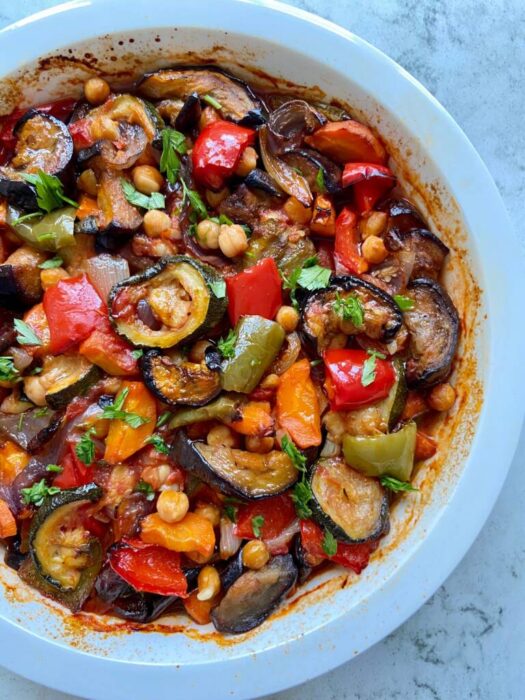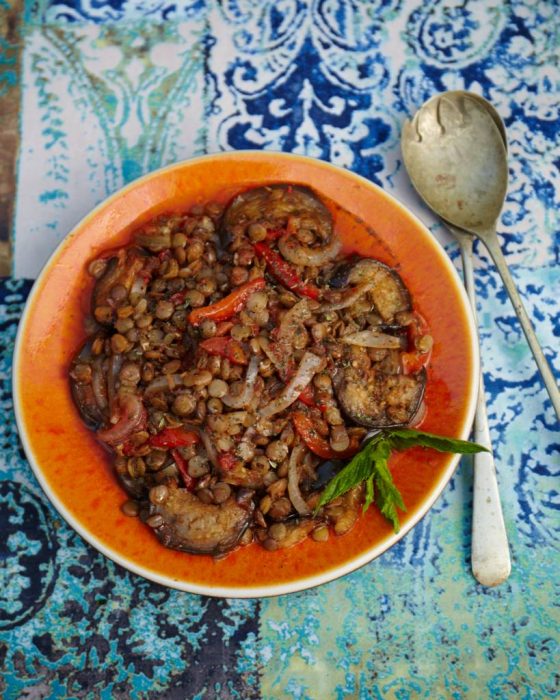
Acuka is a popular and a very moreish breakfast spread across the country; you may come across at cafes and various breakfast houses, kahvaltı evi in İstanbul too. It is a derivative of the Georgian – Abkhazian dip known as ‘Adjika or Ajika’. The Turkish version includes tomato paste as well as the pepper paste, with many variations made across the country. There are similarities with muhammara (or cevizli biber, as we call at my hometown Antakya in the southeast), though garlic is not included in our version of muhammara. This power dip is so easy to make, packed full of flavour and goodness. Red pepper paste, biber salçası is widely available at Turkish and Middle Eastern stores these days, you can make your own at my recipe in my cookery book SEBZE too. Enjoy acuka as part of your Turkish style brunch, or serve as meze aside to grills, casseroles and pasta. Try it as part of the Kahvaltı Tabağı, Turkish syle breakfast or brunch – it is great as a sandwich filler too.
Prepare ahead: I keep a tub of acuka in my fridge regularly, as it stays well in the fridge, covered for 3-4 days. Also use up other nuts, such as chopped hazelnuts in hand too.
- 185g/ 6 ½ oz shelled walnuts
- 3 medium garlic cloves, grated
- 3 tbsp double concentrated tomato paste
- 3 tbsp Turkish red pepper paste, biber salçası
- ½ tsp dried oregano
- ½ tsp ground cumin
- 4 tbsp extra virgin olive oil
- Fine sea salt and freshly ground black pepper
- 1 tbsp crushed walnuts to serve
- 2 tbsp extra virgin olive oil to serve
- Sprinkle of pul biber to serve – optional
- Blitz the walnuts in food processor, until they are about half pinenut size, take care not to grind too much, as it is nice to feel their texture in acuka. Place in a medium mixing bowl and combine with the tomato and pepper paste, grated garlic, extra virgin olive oil, cumin and dried oregano.
- Combine well with a spoon, to achieve a chunky paste. Season with salt and ground black pepper to your taste, bearing mind that the pepper paste is quite salty too.
- Spread over a serving plate, sprinkle 1 tbsp crushed walnuts in the middle and drizzle extra virgin olive oil to serve, along with sprinkle of pul biber if you wish.



